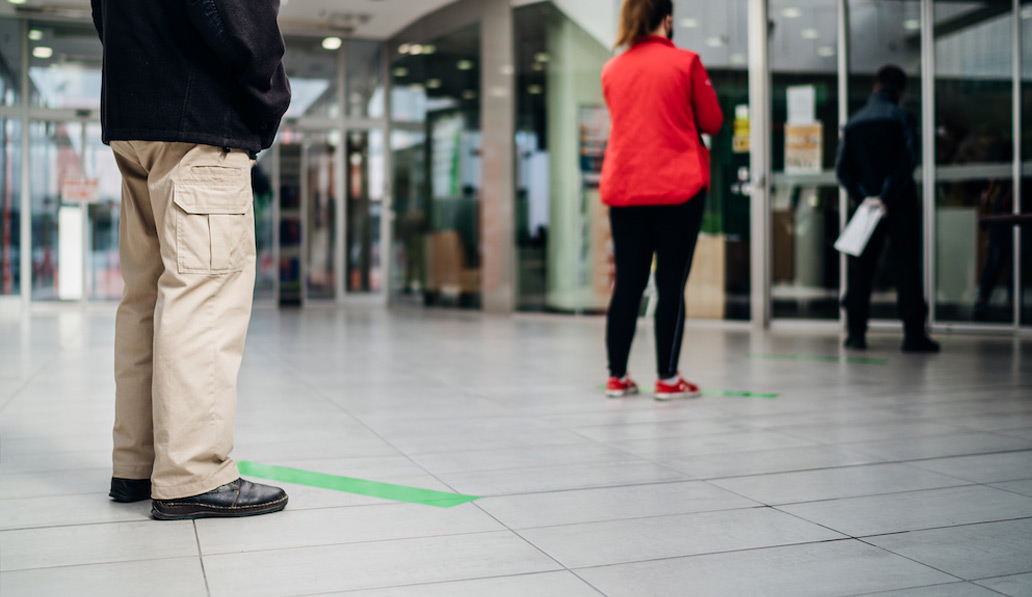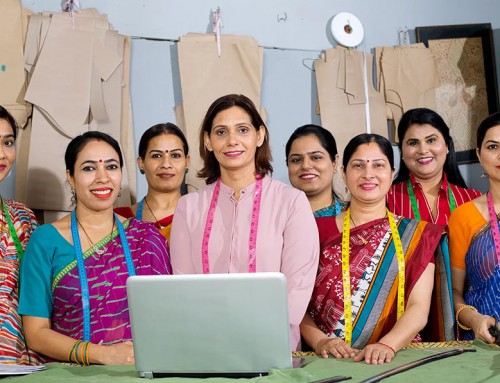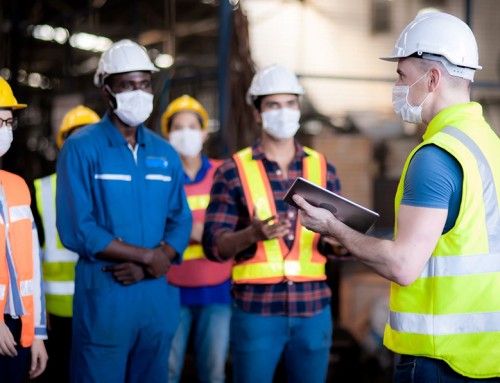There is much talk these days with COVID-19 about the wearing of masks to cover your nose and mouth when out in public and at the workplace.
One diagram that has famously made the rounds on social media indicates that if everyone wore a mask it would effectively reduce the transmission rate to just 1.5%. That’s a great thing but it neither identifies what type of mask nor references the study or data which forms the basis of the finding.
Masks come in all sorts of varieties from the N95 filter masks used by health professionals, homemade fabric masks, all the way to a bandana around your nose and mouth. If you look at the studies and the various government sites, the evidence shows that masks such as the professionally manufactured N95 mask clearly can help prevent the spread of diseases such as COVID-19. However, there is really no data on the effectiveness of homemade or many other types of masks mainly because there are such huge variables in the material and design. Different types of materials have different types of filtering capabilities and design along with fit of any one particular mask on an individual can certainly change the odds.
So why wear a mask when you are at work or even out in public? Let’s look at four solid reasons
- It may be a requirement of the state or your employer;
- Any type of mask will certainly reduce the amount of droplets you may expel to your surroundings or people around you if you were to sneeze, cough or even when just talking. This is certainly one key in reducing the spread of COVID-19 or any disease for that matter.
- Any type of mask will certainly reduce the amount of droplets OTHERS may expel that could enter your system through the mouth, nose or eyes.
- And perhaps one of the biggest reasons is that wearing masks will make you aware of your mouth and nose area and prevent you from inadvertently touching these areas with your hands.
When wearing a mask it is important to keep several things in mind
- Fit it as closely as possible to the contour of your face especially around the nose and chin areas.
- Make sure it’s comfortable and sized correctly for your particular face structure.
- Keep the mask on once you have it on. Constantly removing and putting it back on can dramatically reduce the effectiveness.
- Apply and remove your mask carefully so as not contaminate yourself with whatever may be on the outside of the mask.
- Keep the mask clean bearing in mind that studies have shown that washing fabric type masks can reduce the low effectiveness of fabric to begin with.
With the Corona Virus spreading throughout the world it is probably worth spending some time on protecting you from infection, not just injury . . . for both can have debilitating consequences.
Keeping hands clean is one of the most important steps we can take to avoid getting sick and spreading germs to others. Many diseases and conditions are spread by not washing hands with soap and clean, running water.
The guidance for effective hand washing and use of hand sanitizer was developed based on data from a number of studies.

Washing your hands should involve these 5 scientifically proven steps
- Wet your hands with clean, running water (warm or cold), turn off the tap, and apply soap.
- Lather your hands by rubbing them together with the soap. Be sure to lather the backs of your hands, between your fingers, and under your nails.
- Scrub your hands for at least 20 seconds. Need a timer? Hum the “Happy Birthday” song from beginning to end twice.
- Rinse your hands well under clean, running water. Do not use a basin of water to rinse your hands.
- Dry your hands using a clean towel or air dry them.
When should you wash your hands? Here are just a few suggestions. The more often, the better
- After returning from any public exposure
- Before, during, and after preparing food
- Before eating food
- Before and after smoking, vaping or smokeless tobacco
- Before and after caring for someone who is sick
- Before and after treating a cut or wound
- After using the toilet
- After changing diapers or cleaning up a child who has used the toilet
- After blowing your nose, coughing, or sneezing
- After touching an animal, animal feed, or animal waste
- After handling pet food or pet treats
- After touching garbage.
Unlike many duties throughout a facility, forklift operators almost certainly share their vehicles with other employees on shift or with those associates on other shifts. For this reason, it is especially important for operators to take the time, not only to do a thorough inspection of the vehicle, but a thorough cleaning and disinfecting of the vehicle prior to its use.
There are many common touch points on every type of powered industrial vehicle. By cleaning and disinfecting with emphasis on those areas, you dramatically reduce the transmission of infectious diseases carried by viruses and bacteria among yourself and coworkers.
Here is what you will need
- Nitrile gloves
- Face mask/cloth face covering
- Clean safety glasses
- Hand sanitizer, sanitizer/disinfectant and/or alcohol wipes
With proper PPE and disinfecting supplies
- Wipe down and sanitize the forklift truck, work area, and work tools before starting work
- Know and pay special attention to the high touch points on the truck
- Grab bars and rear overhead guard handle
- Steering wheel, joy stick, horn button, and control handle
- Switches for lights, other functions and control knobs
- Forward, Reverse, Lift, Lower, Side shift, Pusher and other controls
- Seat, seat belt, seat rails and armrest
- Ignition key, if equipped.
- Covers, handles and latches (including fork latches and forks)
- Top & rails of the overhead guard
- Battery connectors where operators must touch cables/connectors to change or connect
- Floor mats and other truck access points
Taking the time before you use a forklift or similar powered industrial truck to clean it as well as doing the pre-use inspection of all the key components will ensure you go home in the same condition as you arrived for work today as well as keep you and your co-workers safe.

Social distancing rules
- For workers coming from outside, special transportation facility should be arranged without any dependency on the public transport system, these vehicles should be allowed to work only with 30-40 % passenger capacity.
- Provision for hand wash & sanitizer preferably with touch free mechanism should be made at all entry and exit points and common areas.
- Ensure work places shall have a gap of one hour between shifts and stagger the lunch breaks of staff, to ensure social distancing.
- Large gatherings or meetings of 10 or more people to be discouraged. Seating at least 6 feet away from others on job sites and in gatherings, meetings and training sessions.
- Ensure not more than 2/4 persons (depending on size) are allowed to travel in lifts or hoists
- Use of staircase for climbing should be encouraged.
- There should be strict ban of gutka, tobacco etc. and spitting should be strictly prohibited.
- Common areas like restrooms, meeting rooms, canteens, toilets, reception areas need to limit the number of people at any one time using any areas that may become congested, use floor markings to maintain social distancing.
- Minimize contact between people while making use of barriers or screens.
- Display signs reminding people to socially distance, wash hands and not touch their faces.
Transport rules
- Ensure those who are travelling are necessary for the work to be carried out.
- Limit passengers in vehicles such as work minibuses. This could include leaving seats empty avoid multi-occupancy vehicles where safe to do so.
- Consider if people who need to travel in vehicles can be kept in the same teams/ shifts to minimize the number of trips as well as persons being transported
- Consider if vehicle windows can be kept open.
- Ensure that people practice good hygiene before and after using the vehicle. Provide hand sanitizer where necessary.
- Vehicles should not be shared between different users if possible.
- Ensure vehicles are sanitized regularly, in particular between different users. Clean commonly touched areas in vehicles including
- Handles (inside and out)
- Steering wheel and starter button
- Stereo switches
- Handbrake and gearstick
- Keys and key fob
- Indicators and wiper stalks
- Windows, mirrors and mirror switches, seat adjusters any other controls.
- Using physical screening between the seats.
Accommodation
- Identify measures to keep workers safe while they are staying in accommodation and working, in your risk assessment.
- Minimize numbers of people living in shared accommodation.
- Workers should not live or stay in more than one ‘household’.
- Keep people who live in the same household together in the same work group.
- Try not to mix households while they are working.
- Try to keep each household socially distanced from other households.
- Check workers health before they start work each day.
- If a worker develops symptoms of coronavirus while working they should return to their household. The individual, and anyone else highlighted by government guidance should then follow the government guidelines on isolation.
- Cleaning regimes to ensure accommodation units stay clean.
- Cleaning regimes for shared communal areas. The employer is responsible for making sure that communal areas are properly and regularly cleaned.
- Cleaning and maintenance regimes for toilets and bathroom.
Improve Your Diet
The food you eat plays a key aspect in determining your overall health and immunity. Eat low carb diets, as this will help control high blood sugar and pressure. A low carb diet will help slow down diabetes and focus on a protein-rich diet to keep you in good shape. and regularly consume vegetables and fruits rich in beta carotene, ascorbic acid & other essential vitamins. Some natural immunity supplements include ginger, gooseberries (amla) and turmeric regularly consume it in your diet. Probiotics like Yoghurt and fermented food are also excellent sources to rejuvenate the composition of gut bacteria, which is important for nutrient absorption by the body. These are good options for the older generation too.
Rules to be followed to prevent spread of Covid in Factories
- Check temperature of each person at the entry. This includes management, workers as well as and any other visitors entering the premises.
- Put alcohol-based hand sanitizer at the entry with visual posters on its proper use.
- Hand over the face masks to every person entering the factory with visual poster for its proper use and disposal.
- Use Potassium Permanganate solution at the entry and make every person to disinfect sole of their shoes.
- Passage of every person through disinfectant tunnels will reduce the risk of virus spread.
Instruct factory’s medical team to frequently check entire premises
- Fever, cough and difficulty breathing must not be neglected. Immediate medical attention needs to be given through medical center within factory.
- Arrange doctor/nurse visits to factory areas for random temperature checks of the workforce
- Encourage workers to stay home if they feel unwell despite medical checkups and take precautionary measures as suggested by doctors.
General Instructions
- Encourage mid-management people to keep a close watch on workers’ activities.
- Tell workers to use public transport according to set guidelines and use face masks and gloves while commuting publically.
- Punch-based biometric machine must be converted into face recognition machines or into card based machines.
- Set up hot water dispenser and encourage workers to drink hot water.
Strictly Avoid
- Social gatherings within factory premises at all management levels including trainings
- Playing with stray animals or let them lick any part of their bodies especially when workers go for lunch in factories.
- Touching ground unnecessarily
- Consumption of tobacco products, cigarette, and similar items
- Spitting
- Handling machines such as cutters/spreaders, laundry machines with bare hands and without putting mask on face.
- Reusing a single-use mask, if your mask gets wet or becomes damp, replace it immediately.
- Touching the front of your mask while removing it, remove it from behind, and immediately throw away the mask in a garbage bin with a lid. Wash or clean your hands immediately afterwards.




